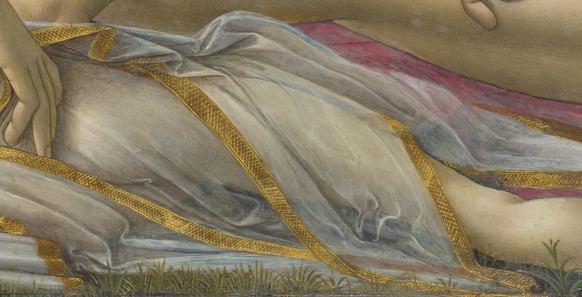Artist Sandro Botticelli Location National Gallery, London Media Tempera | Dimensions 69 cm x 1.73 m Created 1483 Subject Venus, Mars | |
 | ||
Similar Sandro Botticelli artwork, Artwork at National Gallery - London, Renaissance artwork | ||
Mars and Venus is a c. 1483 painting by the Italian Renaissance painter Sandro Botticelli. It shows the Roman gods Venus and Mars in an allegory of beauty and valour. The youthful and voluptuous couple recline in a forest setting, surrounded by playful satyrs. The painting is typically held as an ideal of sensuous love, of pleasure and play.
In the painting Venus watches Mars sleep while two infant satyrs play, carrying his helmet and lance as another rests inside his breastplate under his arm. A fourth blows a small conch shell in his ear in an effort to wake him. Although the work draws from classical sources, perhaps in particular the description by Lucian of a lost painting of the marriage of Alexander the Great and Roxana, it diverges from these in important aspects, and is a product of early Renaissance Neoplatonist thinking. The scene is set in a haunted forest, and the sense of perspective and horizon extremely tight and compact. The sea from which Venus emerged can be seen in the distant background. In the foreground, a swarm of wasps hovers around Mars' head, possibly as a symbol that love is often accompanied by pain.
Another possible explanation is that the wasps represent the Vespucci family that may have commissioned the painting; the symbol of the Vespucci house is the wasp. The painting is thought originally to have been the back of a lettuccio, a wooden sofa, or a similar piece of furniture.
Promenance
Although today Botticelli is the most celebrated Florentine painter of second half of the 15th century, he was only rediscovered in the late 19th century when his emphasis on line and contour chimed with the contemporary sensibility. Between 1857 and 1878, the National Gallery, London, acquired five of his works, including Venus and Mars.
